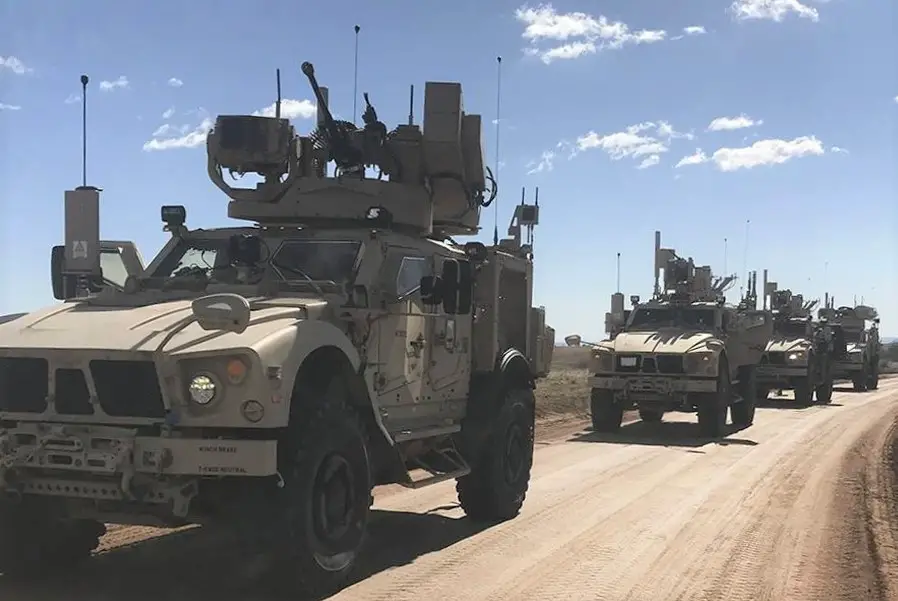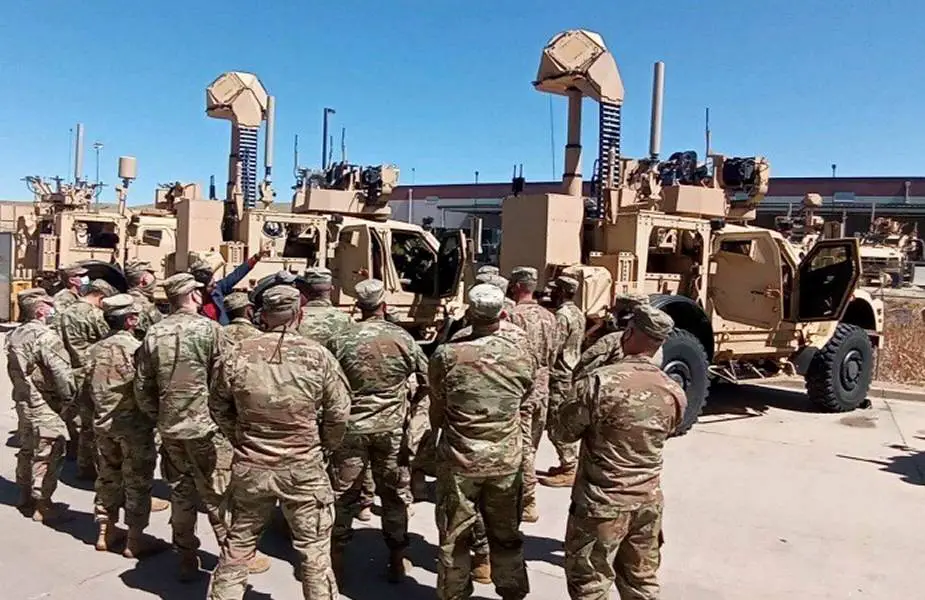To prepare for unmanned aircraft system threats they may see on the battlefield, Soldiers from the 4th Infantry Division participated in the U.S. Army’s first Counter-Small UAS home-station training session at Fort Carson, Colorado, from April 19-May 7 in advance of an upcoming deployment to the U.S. Central Command region. Soldiers simulated using the Mobile-Low, Slow, Small Unmanned Aerial Vehicle Integrated Defeat System, or M-LIDS, which is a system of sensors and shooters mounted on a Mine-Resistant Ambush Protected vehicle. Joseph Lacdan, Army News Service, reports.
Follow Army Recognition on Google News at this link

U.S. soldiers from the 4th Infantry Division took part in the first home-station training for the Counter-Small Unmanned Aircraft Systems from April 19-May 7, 2021, prior to deployment. Soldiers used a system of sensors and shooters called the Mobile-Low, Slow, Small Unmanned Aerial Vehicle Integrated Defeat System, or M-LIDS. (Picture source: U.S. Army/courtesy photo)
The U.S. Army will also deploy five-person C-sUAS mobile training teams that will remain stationed in the CENTCOM area of responsibility to train other deployed units.
At Fort Carson, 4th ID Soldiers learned skills that included power-up procedures and connecting different systems and components, said Chief Warrant Officer 2 Randy Jones, the systems integrator for the 1st Stryker Brigade Combat Team. The training will help counter UAS threats, which provide enemies with assets capable of collecting intelligence and performing reconnaissance and lethal attacks at low costs, such as drones.
“There are lots of enemy UAS threats that are out there on a pretty regular basis and that's likely what we're going to be faced with,” Jones said during an interview in May. “It's really great to be able to have that opportunity to execute the training, and have the time to digest that information, because once we do get downrange, we don't always have a lot of time to learn a new system.”
The training included classroom lessons, hands-on interaction with the C-sUAS systems and a live-fire training session. The class, which consisted mostly of infantry Soldiers, was designed in accordance with the Defense Department’s recently approved C-sUAS strategy that focuses on the posturing of mission-ready forces capable of deterring UAS threats.

U.S. soldiers huddle during Counter-Small Unmanned Aircraft Systems home-station training at Fort Carson, Colo. The Soldiers were preparing for a deployment to the U.S. Central Command region. (Picture source: U.S. Army/courtesy photo)
The mobile training teams will be comprised of a team lead and about four system trainers with expertise in a range of disciplines, including threat systems, UAS pilots and air defense artillery. The curriculum will be tailored to each unit’s needs and will cover topics from basic threat identification and tracking to joint service primary UAS operations.
In 2019, then-Secretary of Defense Mark Esper assigned the Army as the DOD’s executive agent for C-sUAS activities and former Army Secretary Ryan McCarthy then established the Joint C-sUAS Office, or JCO, under director Maj. Gen. Sean Gainey.
Through the JCO, the Army will develop integrated plans, technologies, training concepts, and doctrine, while focusing resources on efficiently countering the UAS threat. As part of the effort, the DOD released its C-sUAS Strategy providing the framework for addressing sUAS across the spectrum from hazards to threats in the homeland, host nations, and contingency locations.
The strategy outlines three efforts: ready the force by developing innovative solutions, defend the force with the provision of mission-ready forces that are able to deter and defeat UAS threats, and building the team by leveraging partnerships.
Jones said that the Soldiers may face such threats during their deployment and the training presented the first opportunity of its kind to train at home. Jones added that the training will help ready them for what they may encounter in a forward operating location by teaching C-sUAS skills to Soldiers who don’t typically see these threats.
“Many of these Soldiers in the class are your typical infantry Soldiers who don't deal with a complex system of systems like this on a regular basis as well as enemy UAS threats,” Jones said. “They're focused on a lot more of your standard infantry tasks. This is a really eye-opening experience for a lot of them to understand the threat that's out there, and understand this system, how we can use [it] to counter these threats.”
DOD contractors and representatives from each original equipment manufacturer participated as Soldiers learned how to identify enemy threats from friendly forces. Those representatives included experts on radar systems, electronic warfare and gunner systems.
Instructors broke down the course into separate training blocks, including sections on command and control, radar, and network, said Gary Cathcart, who works as the M-LIDS logistics lead for the Logistics Management Directorate, Army Rapid Capabilities Office.
“[The training] definitely enhanced unit readiness by giving the Soldiers familiarization on the operations of the system,” Jones said. “This is a new system that none of us have ever seen before and none of us have ever used before … It's a complex system of systems, that each of these individual components on these trucks needs to integrate and work together.”
Cathcart said that the Army currently has been gathering feedback from Soldiers and will use student input to build the next iteration of the course. He added that as more Army units train with the C-sUAS software they will look to incorporate the other branches.
“The biggest thing is that we're getting this threat awareness spread out there to the warfighter… making sure that people are aware of the threat, and then aware of what systems and what capabilities we have to defeat that threat,” Jones said.














